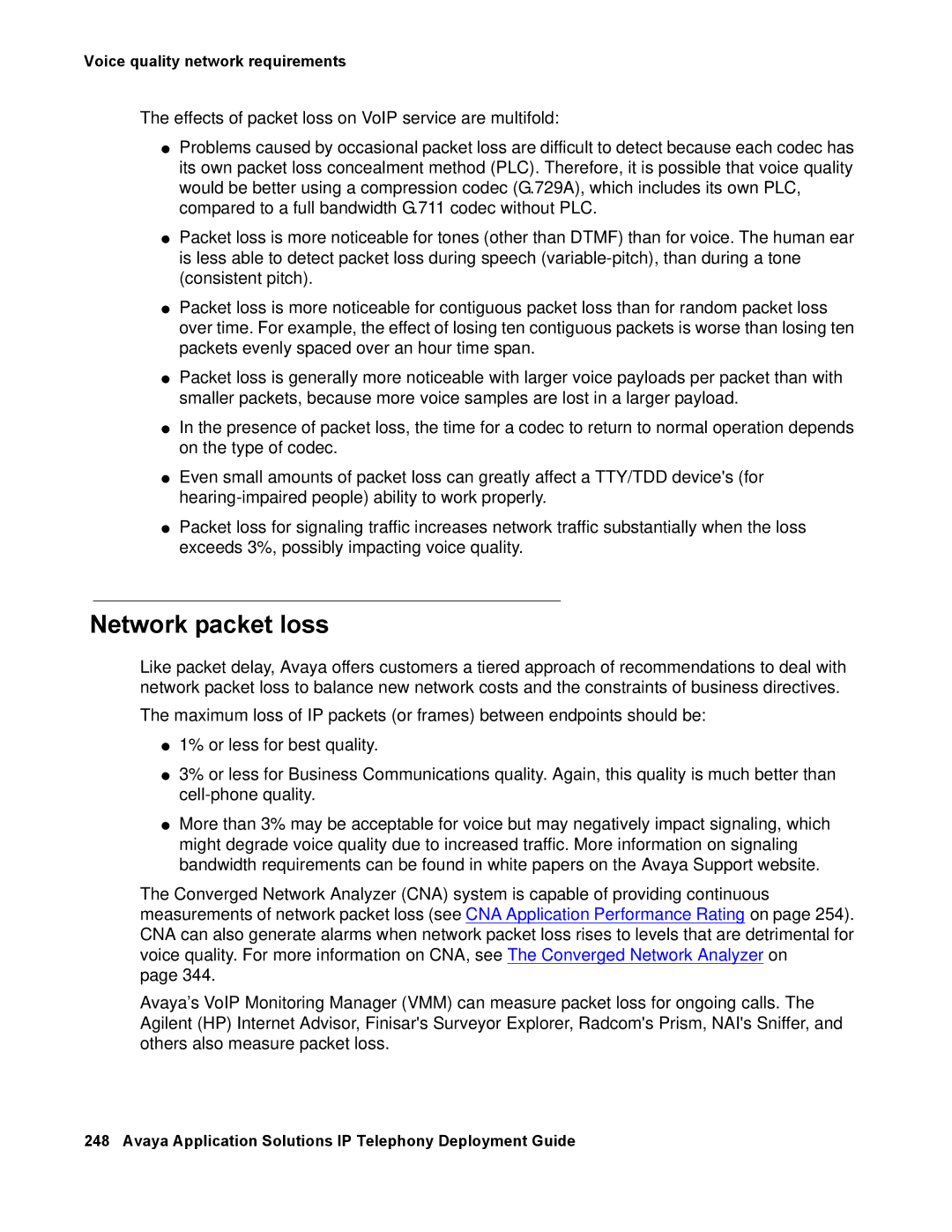Voice quality network requirements
The effects of packet loss on VoIP service are multifold:
●Problems caused by occasional packet loss are difficult to detect because each codec has its own packet loss concealment method (PLC). Therefore, it is possible that voice quality would be better using a compression codec (G.729A), which includes its own PLC, compared to a full bandwidth G.711 codec without PLC.
●Packet loss is more noticeable for tones (other than DTMF) than for voice. The human ear is less able to detect packet loss during speech
●Packet loss is more noticeable for contiguous packet loss than for random packet loss over time. For example, the effect of losing ten contiguous packets is worse than losing ten packets evenly spaced over an hour time span.
●Packet loss is generally more noticeable with larger voice payloads per packet than with smaller packets, because more voice samples are lost in a larger payload.
●In the presence of packet loss, the time for a codec to return to normal operation depends on the type of codec.
●Even small amounts of packet loss can greatly affect a TTY/TDD device's (for
●Packet loss for signaling traffic increases network traffic substantially when the loss exceeds 3%, possibly impacting voice quality.
Network packet loss
Like packet delay, Avaya offers customers a tiered approach of recommendations to deal with network packet loss to balance new network costs and the constraints of business directives.
The maximum loss of IP packets (or frames) between endpoints should be:
●1% or less for best quality.
●3% or less for Business Communications quality. Again, this quality is much better than
●More than 3% may be acceptable for voice but may negatively impact signaling, which might degrade voice quality due to increased traffic. More information on signaling bandwidth requirements can be found in white papers on the Avaya Support website.
The Converged Network Analyzer (CNA) system is capable of providing continuous measurements of network packet loss (see CNA Application Performance Rating on page 254). CNA can also generate alarms when network packet loss rises to levels that are detrimental for voice quality. For more information on CNA, see The Converged Network Analyzer on
page 344.
Avaya’s VoIP Monitoring Manager (VMM) can measure packet loss for ongoing calls. The Agilent (HP) Internet Advisor, Finisar's Surveyor Explorer, Radcom's Prism, NAI's Sniffer, and others also measure packet loss.
